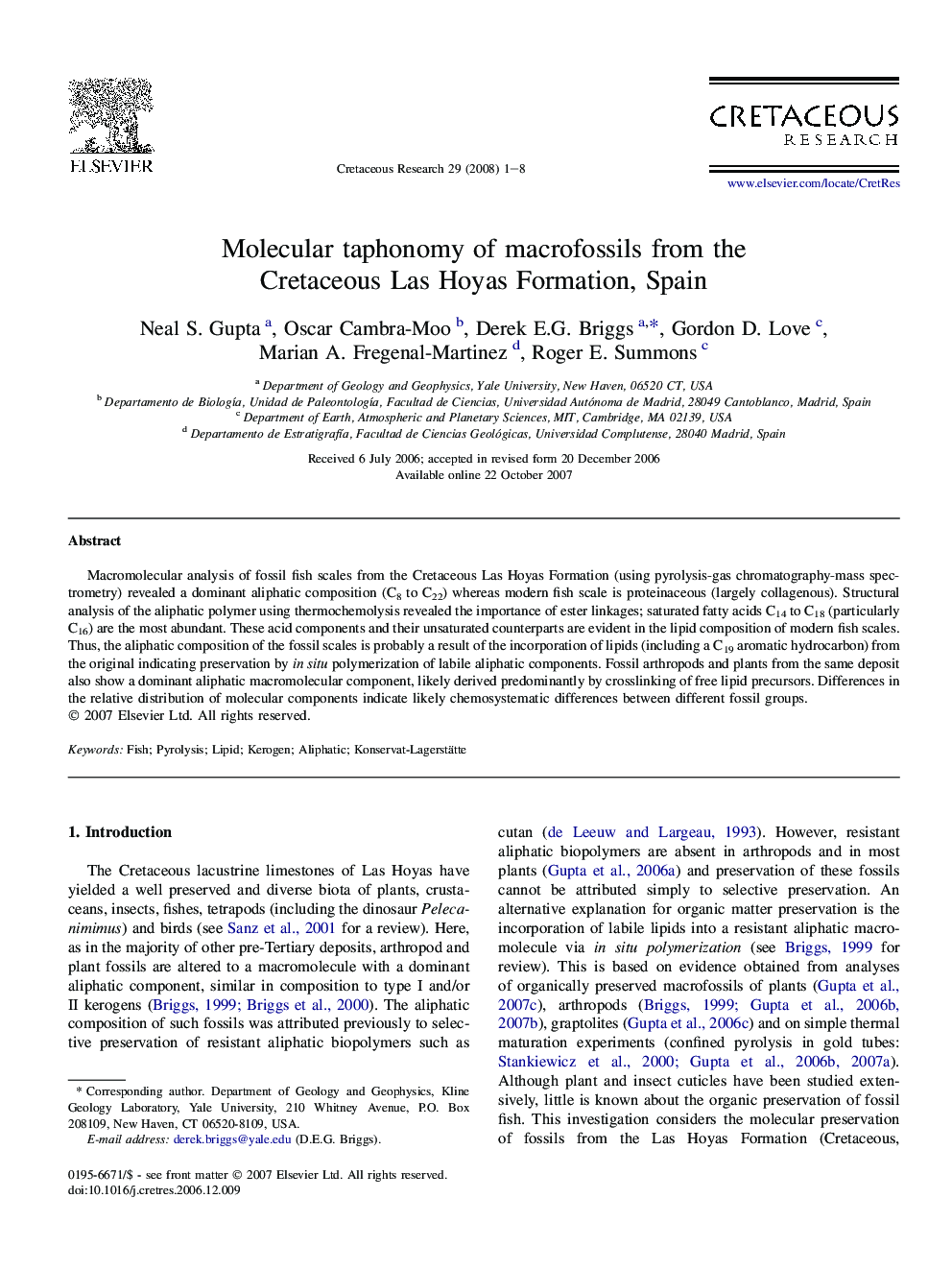| Article ID | Journal | Published Year | Pages | File Type |
|---|---|---|---|---|
| 4747893 | Cretaceous Research | 2008 | 8 Pages |
Macromolecular analysis of fossil fish scales from the Cretaceous Las Hoyas Formation (using pyrolysis-gas chromatography-mass spectrometry) revealed a dominant aliphatic composition (C8 to C22) whereas modern fish scale is proteinaceous (largely collagenous). Structural analysis of the aliphatic polymer using thermochemolysis revealed the importance of ester linkages; saturated fatty acids C14 to C18 (particularly C16) are the most abundant. These acid components and their unsaturated counterparts are evident in the lipid composition of modern fish scales. Thus, the aliphatic composition of the fossil scales is probably a result of the incorporation of lipids (including a C19 aromatic hydrocarbon) from the original indicating preservation by in situ polymerization of labile aliphatic components. Fossil arthropods and plants from the same deposit also show a dominant aliphatic macromolecular component, likely derived predominantly by crosslinking of free lipid precursors. Differences in the relative distribution of molecular components indicate likely chemosystematic differences between different fossil groups.
